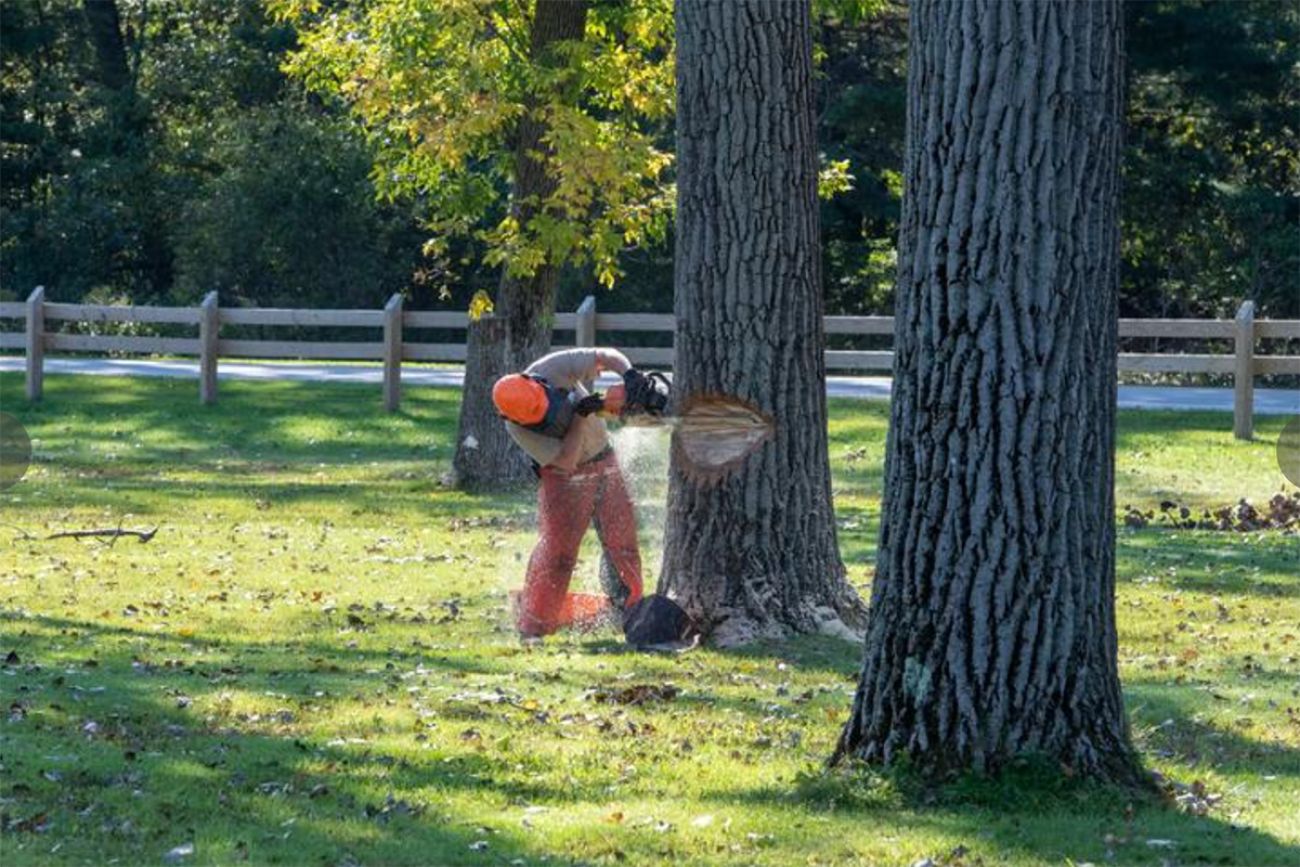7,000+ trees on chopping block for trail expansion in Sleeping Bear Dunes


- A 4.25-mile expansion of Sleeping Bear Dunes Heritage Trail will begin in the fall
- Over 7,000 trees will be removed for a 10-foot wide trail with 2 feet shoulders on each side.
- Residents near the trail are concerned about the environmental impacts of cutting down so many trees
Susan Wheadon, has lived in Cedar for more than 20 years. It’s a small town — just over 100 residents — 10 miles north of Traverse City.
Wheadon, 76, and her husband Bill Wheadon live just a mile from Good Harbor Beach where they bike the Sleeping Bear Dunes Heritage Trail, which runs between Empire and Bohemian Road through Sleeping Bear Dunes National Lakeshore. Weather permitting, the Wheadons use the trail on a weekly basis.
A planned trail expansion could allow Wheadon to see more of the scenic Sleeping Bear Dunes; she is willing to sacrifice her walks and bike rides to avoid altering the environment.
“We want to protect our sand dunes and we want to protect our wildlife,” she said. “We could bike the trail all the way through, but we are so willing to give that up to save the environment.”
Related:
- Reimagined St. Ignace memorial to be a showcase of Native American history
- Unseasonably warm weather in Michigan a challenge for fruit farmers
- As Michigan winters vanish, researchers study snow for clues about what’s next
Heritage Trail has been expanded several times over the years, but “Segment 9” is what is most concerning to Wheadon.
“The park service has done a tremendous job of providing us with bike trails and walking trails,” she said. The last segment is concerning, because the initial plan was proposed more than 15 years ago and so much has changed since then, Wheadon added.
“Now we have concerns about climate change, of course, and how trees are helpful in mitigating climate change,” she said.
An independent report by the Little Traverse Lake Association found that 7,300 trees will be cut down across a 25-foot path to make way for the trail, which will be 10 feet wide with 2 feet shoulders on either side. The most common species are the American beech and sugar maple trees.
Wheadon is not alone in her concern. The group Sleeping Bear Naturally is opposed to the trail being paved with asphalt, which in its opinion is not environmentally friendly. Sleeping Bear Naturally is using social media to share concerns about the environmental impact of the trail.
“Soon this beautiful forest canopy could be opened up to the sky, the ground paved with asphalt, disrupting animal habitat and allowing invasive species to take over. Why isn’t the National Park Service protecting this critical wooded dune and swale complex and wetlands per their mission?” the group asked on a recent Facebook post.
One of Wheadon’s other concerns is the potential increase in traffic volumes, which are expected.
“We’ve gotten to be really popular and people park at the beach. This would increase the amount of parking people would need,” she said.
Although there were no rare or endangered species found within the pathway, the report included four vulnerable elements near the route including a state special concern cut-leaf water parsnip, state-threatened pine drops, wooded dune and swale complex and a state-protected critical dune area.
“Nobody wants to see trees cut, they provide wildlife habitat, they're sucking carbon out of the atmosphere so they clean the air,” said Daniel Kashian, professor in the Department of Biological Science at Wayne State University.
Dunes are ever-shifting, so trees provide a very important role by stabilizing the soil, Kashian added.
“This is a forested area … and 7,000 trees in your backyard is a ton of trees but 7,000 trees in a forest kind of really isn't,” he said. “Trees are cut all the time. That doesn't make it OK.”
The now $14.5 million project began in 2008 after M-22 was designated as a national scenic route and the National Park Service, along with the Traverse Area Recreation and Transportation Trails Inc., designed the non motorized trail to run through Sleeping Bear Dunes, said Scott Tucker, superintendent of the park.
“This is providing several hundred thousand visitors an opportunity to get out into the park,” Tucker said. “Folks can bike it, they can hike it, they can run it, they can walk it.”
Of the roughly 7,000 trees that will be removed, 3,000 of them are saplings or a young tree, Tucker said. “The large trees, we've directed them to find their ways around but predominantly we're talking about saplings and smaller trees … that will be removed.”
Construction of “Segment 9,” or “Pathway to Good Harbor,” will begin this fall and is expected to be complete by winter of 2025. The 4.25-mile extension of Sleeping Bear Heritage Trail spans from Bohemian Road to Good Harbor Trail in Leelanau County.
“It is a very thoughtful and deliberate design process and the National Park Service will be out with the engineer to avoid, wherever possible, taking down larger trees and to help identify those trees that maybe aren't healthy,” said Julie Clark, chief executive officer of TART Trails.
“We know that 100 percent of those saplings are not going to make it to maturity. That's the way of a forest,” she said.
Michigan Environment Watch
Michigan Environment Watch examines how public policy, industry, and other factors interact with the state’s trove of natural resources.
- See full coverage
- Subscribe
- Share tips and questions with Bridge environment reporter Kelly House
Michigan Environment Watch is made possible by generous financial support from:
Our generous Environment Watch underwriters encourage Bridge Michigan readers to also support civic journalism by becoming Bridge members. Please consider joining today.
See what new members are saying about why they donated to Bridge Michigan:
- “In order for this information to be accurate and unbiased it must be underwritten by its readers, not by special interests.” - Larry S.
- “Not many other media sources report on the topics Bridge does.” - Susan B.
- “Your journalism is outstanding and rare these days.” - Mark S.
If you want to ensure the future of nonpartisan, nonprofit Michigan journalism, please become a member today. You, too, will be asked why you donated and maybe we'll feature your quote next time!




